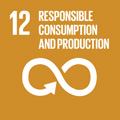- Docente: Ira Torresi
- Credits: 5
- Language: English
- Moduli: Ira Torresi (Modulo 1) Valeria Penazzi (Modulo 2)
- Teaching Mode: In-person learning (entirely or partially) (Modulo 1); In-person learning (entirely or partially) (Modulo 2)
- Campus: Forli
-
Corso:
Second cycle degree programme (LM) in
Interpreting (cod. 8060)
Also valid for Second cycle degree programme (LM) in Interpreting (cod. 8060)
Learning outcomes
Students know and are able to use the basic consecutive and simultaneous interpreting techniques from English into Italian.
Course contents
The course will focus on developing students' skills concerning the analysis, comprehension and reproduction of spoken speeches from English into Italian, and on their control of their delivery and of the communicative event.
This module will take on and expand the foundations laid in the Conference Interpreting Theory and Practice module (parts of Consecutive Interpreting Theory and Practice, prof. Amato; and Simultaneous Interpreting Theory and Practice, prof. Mack). Given that the Conference Interpreting Theory and Practice module is concentrated in the first half of the first semester, the English>Italian interpreting module will start in the second half of the first semester (two weekly 2-hour classes). It will then cover the whole of the second semester (one weekly 2-hour class).
Students will be mainly exposed to original speeches, some of them containing difficulties such as information redundancy, high speech rate, unusual accents and varieties of English, specific coherence and/or cohesion patterns, so as to develop specific strategies.
Due to limited booth space, students will be divided into two classes, each class receiving 20 hours of interpreting from English into Italian from Ira Torresi (mainly in the first semester) + 20 hours from Valeria Penazzi (mainly in the second semester).
Those studying English as their B Language will additionally attend classes of interpreting from Italian into English.
Readings/Bibliography
A Readings list will be given during the Conference Interpreting Theory and Practice course.
Teaching methods
Practical exercise in class, monitored by the teacher and peers; self-training and self-monitoring. All texts used in class and at the exam are original speeches, audio- or video-recorded.
As this course takes place in Labs with electrical equipment and PCs, please complete e-learning modules 1 and 2 of the mandatory training on safety in the workplace before the course starts: https://elearning-sicurezza.unibo.it/.
Assessment methods
End-of-course assessment consists in one consecutive (approx 5 mins) and one simultaneous (approx 7 mins) interpreting tests from English into Italian, each one accounting for 50% of the final mark of the Interpreting from English into Italian I module. Both tests are taken in the booth on the same day, and their topic is communicated via IOL/Moodle five days prior to the exam. Exam results are given via IOL/Moodle's forum (only student registration numbers, not names, will be shown) a few days after the exam.
Marks will be given as follows: (0-17): major inconstistencies, several errors, distortions, additions and/or omissions of key concepts; mistakes in target language grammar/syntax/word choice/pronunciation/ planning mistakes that hinder comprehension. (18-20): recurrent but minor errors, distortions, additions and/or omissions; mistakes in target language grammar/syntax/word choice/pronunciation/planning mistakes that make comprehension difficult. (21-24) few, local imprecisions, generalizations, small additions and/or omissions; the target text can be followed despite a few target language grammar/syntax/word choice/pronunciation/planning mistakes. (25-27): good overall coherence and cohesion, few imprecisions; good command of target language, good use of voice. (28-30): very good coherence and cohesion; very good command of target language, very good use of voice.
For those studying English as their B language, the mark of the Interpreting from English into Italian I module is then averaged out (at 50%) against the mark for Interpreting from Italian into English I, whose tests are structured in the same way as those into Italian, and are taken on the same day. (But see "Congelamenti" below.)
"Congelamenti": student must take all the relevant Italian < > English interpreting tests on the same day (B language: consecutive and simultaneous into Italian, consecutive and simultaneous into English; C language: consecutive and simultaneous into Italian). If at least 50% of the tests - 2 tests for B Language, 1 test for C Language - is assessed positively, the tests that have been passed are kept as good. All the remaining English interpreting tests must be taken together, and the 50% rule continues to apply.
Example: English is my B language. The first time I sit the exam, I pass only the simultaneous into Italian and the consecutive into English. The second time over, I take the remaining two tests and pass the consecutive into Italian. The following time, I re-take the simultaneous interpreting test into English. The final mark is an average of all 4 tests.
NB1 instructors may choose to give students a general assessment of single tests that have been passed, without telling them the mark.
NB2 if Interpreting from Italian into English I is taken as an elective exam (opzionale) by students with English as a C language, it counts as a separate exam for the purposes of "Congelamenti" and marking.
“Rifiuto del voto”: if a student is not satisfied with her/his exam results, s/he may re-take the whole exam or one of its modules (interpreting into Italian, or into English) only once. E.g. if I choose to retake an exam that was marked 19, and next time the mark is 18, I can no longer re-take it. NB: this has an effect on “Congelamenti” (see above). If English is my B language, and I pass consecutive into English + the entire Interpreting into Italian module (with 18), if I choose to re-take the Interpreting into Italian module, then the consecutive into English test cannot be kept as good, because it no longer accounts for 50% of all tests.
Teaching tools
Audio- and video-recordings of real working situations and from the Internet. IOL/Moodle page.
Office hours
See the website of Ira Torresi
See the website of Valeria Penazzi
SDGs




This teaching activity contributes to the achievement of the Sustainable Development Goals of the UN 2030 Agenda.
